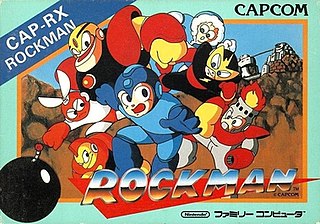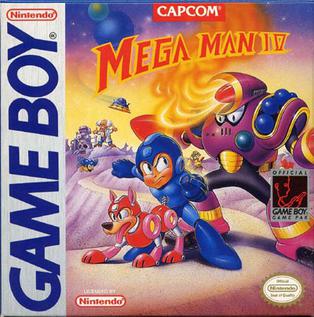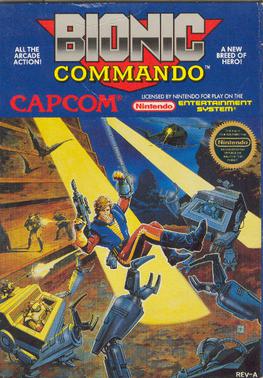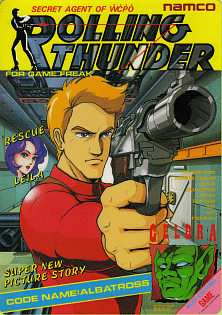
Mega Man 5 is a 1992 action-platform game developed by Capcom for the Nintendo Entertainment System. It is the fifth game in the original Mega Man series and was released in Japan on December 4, 1992. It saw a release during the same month in North America and in 1993 in Europe.

Final Fight 2 is a 1993 side-scrolling beat 'em up video game released by Capcom for the Super Nintendo Entertainment System. It is the direct sequel to the 1989 coin-operated arcade game Final Fight, which was previously also released for the SNES. Final Fight 2 was developed by Capcom's consumer division with no preceding coin-op version. The game was re-released onto Wii's Virtual Console service in 2009 for the North American and European regions.

Final Fight 3, released in Japan as Final Fight Tough, is a side-scrolling beat 'em up by Capcom originally released for the Super Nintendo Entertainment System in 1995. It is the second sequel to Final Fight released for the Super NES, following Final Fight 2, and like its predecessor, it was produced by Capcom's consumer division with no preceding arcade version released.

Contra Force is an run and gun game released by Konami for the Nintendo Entertainment System in 1992 in North America. It is a spinoff of the Contra series, being the third game in the series released for the NES following the original Contra and Super Contra. However, the game's plot and setting are unrelated to both previous and succeeding entries, as the villains in the game are human terrorists instead of an alien menace. The game was scheduled to be released in Japan under the title of Arc Hound, with no ties to the Contra series, but was cancelled.

Bionic Commando is a video game franchise consisting of an original arcade video game released in 1987 and several later versions and sequels. The games are platform games in which, with two exceptions, the player cannot jump. A bionic arm is used to cross gaps and climb ledges. The player character, Nathan "Rad" Spencer, uses this as a grappling gun/hook to swing, climb and descend through levels. Seven games have been released, from the original 1987 Bionic Commando to 2011's Bionic Commando Rearmed 2. The series is based in an alternate timeline in which Nazism is not completely eradicated following World War II.

Mega Man, known as Rockman in Japan, is a 1987 action-platform game developed and published by Capcom for the Nintendo Entertainment System. It was directed by Akira Kitamura, with Nobuyuki Matsushima as lead programmer, and is the first game of the Mega Man franchise and the original video game series. Mega Man was produced by a small team specifically for the home console market, a first for Capcom, which previously focused on arcade video games.

Mega Man X2, known as Rockman X2 (ロックマンX2) in Japan, is a 1994 action-platform game developed by Capcom for the Super Nintendo Entertainment System (SNES). The game was released in Japan on December 16, 1994, and in North America and PAL regions in 1995. It is the direct sequel to Mega Man X, released one year prior. Mega Man X2 takes place in the near future in which humans try to peacefully coexist with intelligent robots called "Reploids", with some of the Reploids going "Maverick" and threatening daily life. The plot follows the android protagonist X, a "Maverick Hunter" who has saved humanity from the evil Sigma six months earlier. A trio of Mavericks calling themselves the "X-Hunters" has arisen, intent on destroying X by luring him with bodyparts of his comrade Zero, who died in the conflict with Sigma's right hand robot named Vile.

Mega Man IV is an action-platform video game by Capcom for the Nintendo Game Boy. It is the fourth installment in the handheld version of the Mega Man series. The game continues the quest of the protagonist Mega Man in the struggle with his long-time nemesis Dr. Wily, who sends out a disruptive radio signal to cause a rampage, citywide destruction from dormant robots. Mega Man IV features the traditional action platforming gameplay of the prior games while introducing one new feature, the ability to purchase items with power-ups found throughout each stage. As with previous Game Boy releases, the game incorporates gameplay elements and bosses from two sequential Nintendo Entertainment System (NES) games: Mega Man 4 and Mega Man 5. The game has received a warm critical reception. In 2013, Mega Man IV was made available on the Virtual Console of Japan's Nintendo eShop for the Nintendo 3DS. It was later released in the North American and PAL region eShops the following year.

G.I. Joe: A Real American Hero is a 1991 run and gun game published by Taxan for the Nintendo Entertainment System based on the toyline of the same name. The game was produced by Ken Lobb and developed by the same Japanese team that later formed KID. A sequel developed by the same team, titled G.I. Joe: The Atlantis Factor, was released the following year, but was published by Capcom after Taxan went out of business.

Chip 'n Dale Rescue Rangers is a platform game developed and published by Capcom based on the Disney animated series of the same name. Originally released for the Nintendo Entertainment System in Japan and North America in 1990, it came to Europe the next year, and was ported to the Nintendo PlayChoice-10 arcade system. It sold approximately 1.2 million copies worldwide.

Legendary Wings is a fantasy-themed shoot-'em-up / platformer arcade video game released by Capcom in 1986. The player takes control of a young soldier equipped with magical wings who must save the world from a malfunctioning supercomputer. A home version for the Nintendo Entertainment System was released exclusively in North America in 1988. The original coin-op version is included in Capcom Classics Collection for PlayStation 2 and Xbox and in Capcom Classics Collection Remixed for PlayStation Portable.

Mega Man Xtreme is a 2000 action-platform game developed by Capcom for the Game Boy Color handheld console. It is a spin-off title in the Mega Man X series of video games that originated on the Super Nintendo Entertainment System. Mega Man Xtreme takes place within the series timeline during the 22nd century, in which a group of "Maverick" androids called the "Shadow Hunters" hack into the world's "Mother Computer" system, destabilize all of the networks, and allow other Mavericks to cause rampant destruction all over the world. The heroic "Maverick Hunter" X is tasked with going into cyberspace to relive his past missions and put a stop to the group's plans.

G.I. Joe: The Atlantis Factor is an action-platform video game developed by KID and published by Capcom for the Nintendo Entertainment System. It was released only in North America in 1992. It is the sequel to KID's previous NES G.I. Joe game, G.I. Joe, which was published by Taxan the previous year.

The Lone Ranger is an 1991 action-adventure game released by Konami for the Nintendo Entertainment System (NES). Released only in North America, it is based on The Lone Ranger radio and TV franchise, the latter which was still rerunning in syndication when the game was released. The player takes the role of the Lone Ranger himself as he engages against outlaws in side-scrolling, overhead, and even first-person segments. The Lone Ranger theme music is played prominently during the game, which includes a DPCM-coded voice clip of the ranger shouting his catch-phrase "Hi Yo Silver".

The Astyanax, known in Japan as The Lord of King (ザ・ロード・オブ・キング), is a side-scrolling action game developed by Aicom released for the arcades by Jaleco. A home version for the Nintendo Entertainment System, simply titled Astyanax, was released shortly after the arcade version but the NES version is decidedly different from its arcade predecessor in terms of story.

Section Z is a horizontally scrolling shooter by Capcom, released as an arcade video game in 1985. A home version was published for the Nintendo Entertainment System in 1987.

Strider is an action-platform video game developed and published by Capcom for the Nintendo Entertainment System in North America in 1989. While the development of the NES version of Strider was produced in tandem with the arcade version, the Japanese version for the Famicom was never released. The NES version of Strider is included in the 2006 Game Boy Advance compilation Capcom Classics Mini-Mix.

Bionic Commando, originally released as Hitler's Resurrection: Top Secret in Japan, is a platform game released by Capcom for the Family Computer and Nintendo Entertainment System in 1988. It is based on the 1987 arcade game Bionic Commando.

Rolling Thunder is a run and gun video game developed by Namco in Japan and Europe and released in 1986 as a coin-operated arcade video game using the Namco System 86 hardware. It was distributed in North America by Atari Games. The player takes control of a secret agent who must rescue his female partner from a terrorist organization. Rolling Thunder was a commercial success in arcades, and it was released for various home computer platforms in 1987 and the Nintendo Entertainment System in 1989. The original arcade game has been included in various classic game compilations as well. It influenced later arcade action franchises such as Shinobi and Time Crisis, which borrowed mechanics such as taking cover behind crates.

Captain Commando is a 1991 futuristic side-scrolling beat 'em up originally developed and published by Capcom as an arcade video game, and later ported to several other platforms. It was the seventeenth game produced for the company's CP System hardware. The game stars the titular superhero who was originally conceived as a fictional spokesman used by Capcom USA in the company's console games during the late 1980s. The game was included in Capcom Beat 'Em Up Bundle compilation title, which was released digitally for Nintendo Switch, PlayStation 4, Xbox One, and Windows on September 18, 2018.





















